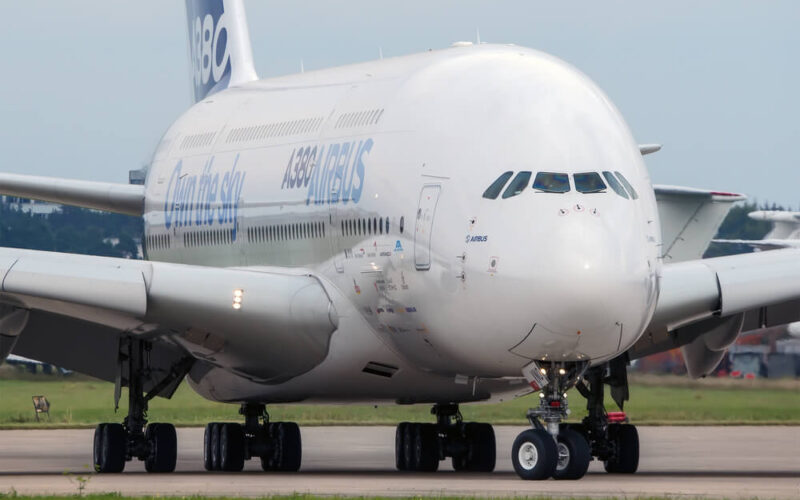When Airbus officially launched the double-decker A380 in 2000, it was clear that the aircraft would become the poster child of the company in the 21st century. The Super Jumbo, as it was nicknamed, also became a poster child of many airlines, mostly in the Middle East: such carriers as Emirates, Etihad and Qatar Airways are associated purely with the Airbus A380, despite the fact that they also operate other aircraft. The A380’s portfolio of clients is fairly impressive, despite it being short – in total, 15 airlines operate the type, with one of them being an ACMI operator.
But the list never included a single United States-based operator, despite the fact that carriers in the Land of Opportunity are some of the biggest airlines in the world. With Airbus ceasing the production of the A380 in 2021 and current operators possibly retiring the Super Jumbo much earlier than expected due to the current outbreak of COVID-19, it is highly unlikely we will see that change. While theoretically such airlines as American Airlines (A1G) (AAL) , Delta Air Lines or United Airlines could take-up second-hand A380’s, in practice, seeing an A380 fly the flag of the United States on its fuselage is not a sight that the world is bound to see.
However, that is not to say that Airbus did not try. A few months before Singapore Airlines (SIA1) (SINGY) took the A380 for its maiden commercial flight in October, the European manufacturer embarked on trial flights of the Super Jumbo in the United States on March 19, 2007, when two A380s landed separately in New York John F. Kennedy International Airport (JFK) and in Los Angeles International Airport (LAX). The pair of aircraft also landed in Washington Dulles International Airport (IAD) and Chicago O’Hare International Airport (ORD) the same week.
Experienced in the United States
After all, the company has had its fair share of experience in selling jets in the United States. When Airbus launched its first aircraft, the A300, it embarked on a tour in the United States with the wide-body in 1973. While the tour did not provide the results the company wanted, as the 1973 oil crisis sent the global economy on a downward spiral, it caught the attention of some executives and the A300 finally found a buyer in the United States in 1978: Eastern Air Lines. The operator signed up for 23 aircraft after Airbus had used another cheeky sales tactic – gave the airline a trial period with four A300s to better understand its performance and operating economics.
With the A380, Airbus expected to pick the fruits of the cherry tree almost immediately. John Leahy, the sales chief of Airbus, stated that the company was “looking forward to talking to United and Northwest,” reported Reuters after the Super Jumbo just landed in New York’s JFK airport. Furthermore, the Toulouse, France-based manufacturer was still planning to launch the A380F – a freighter variant of the aircraft. However, after FedEx and United Parcel Service (UPS) canceled their orders, it was left empty-handed. Eventually, the freighter version was canceled altogether.
Clay McConnell, the former-Vice President of Communications and current Head of Communications at Airbus Americas, was more than optimistic for the A380’s future prospects. “We fully expect to break even and sell 1,600 over the next 20 years,” McConnell told the Time news.
Airbus was not the only one excited about the trial flights. The former-deputy executive director of airports and security for Los Angeles World Airports Paul Haney stated that the airport authority was preparing for its largest turnout of spectators since 1974, when Concorde visited LAX, reported Los Angeles Times on March 19, 2007.
One of the spectators at LAX, a World War Two veteran and a former B-17 bomber pilot, noted that the Airbus A380 was “a big boy.” For others, it was a regular day at work. Lufthansa (LHAB) (LHA) , whose aircraft landed at JFK, and Qantas, whose A380 landed in LAX, were testing the airports and their ability to handle the aircraft.
The second round of visits was conducted in October 2007, a few weeks before the first Singapore Airlines’ (SIA1) (SINGY) customers boarded the A380 for their flights. During the second tour, Airbus’ pride and joy double-decker visited Bradley International Airport (BDL), Cincinnati/N. Kentucky Airport (CVG) and San Francisco International Airport (SFO).
Sadly, despite the tours, no commercial airline in the United States signed up for the A380. Interestingly, the A380 almost became the Air Force One, replacing the aging Boeing 747-400s. But the story of an aircraft that was built in Europe flying the United States president never came to be: the Boeing 747-8 was chosen to be the next Air Force One.

